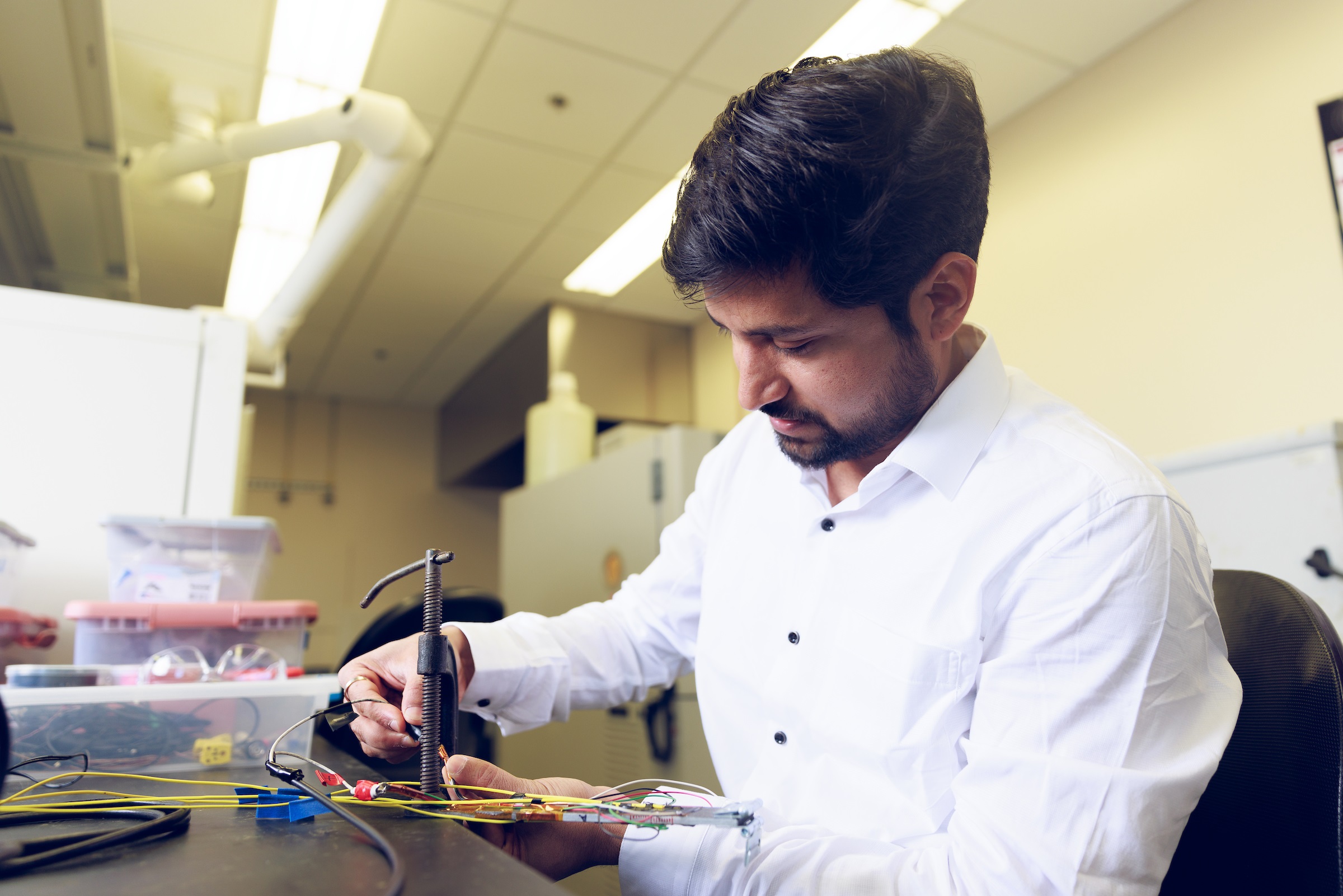Engineering researchers at The University of Alabama are exploring a promising path to self-repair for materials often used in the aerospace industry, possibly saving time and money while improving safety.
Using sensors that both predict, detect and evaluate structural issues as well as activate heat-induced repair, the project hopes laminated composites, or materials layered together to meet the need of the final application, can last longer. The work, supported by the United States Air Force Office of Scientific Research, has caught the interest of NASA as it searches for novel improvements to spacecraft materials that increase durability for longer missions for space structures where in-person repair of the structure can be very costly, and in some cases, virtually impossible.
“This is a paradigm shift of what can be done structurally with materials,” said Dr. Samit Roy, the William D. Jordan Professor of Aerospace Engineering and Mechanics. “Our method is conditioned-based health monitoring and healing that can keep materials in service without immediate removal or replacement, and that is critical in space because you can’t turn back halfway to Mars.”
Roy and co-researcher, Dr. Sameer Mulani, associate professor of aerospace engineering and mechanics, have shown that integrating thermoplastics with shape-memory properties into the composite materials can self-repair cracks, or delamination, by melting, reforming and rejoining the material.
Laminated composites have been used in military airplanes for decades and have more recently been used in commercial aviation in areas such as the primary airframe of the plane. They can also be used in casing for a rocket motor. Typically made of carbon fiber and polymers, laminated composites are lighter than metal while also being stronger and stiffer.
Cracking from overuse and stress, however, can delaminate the composites, which threaten the integrity of the plane or spacecraft. That’s solved now by expensive and time-consuming routine maintenance that replaces the materials because cracks can be hard to spot inside the composites.

“Our technology is most useful for applications of laminated composites that are hard to access,” Roy said. “This method can repair the airframe, such as an unmanned aerial vehicle, on the fly repeatedly.”
Along with the innovation of integrating the materials, the sensors used in this process will be able to predict and analyze cracking to determine when and where to activate the healing. Mulani and his lab have used advanced machine learning techniques and simulations to train the coding in sensors placed with the materials.
“The current state-of-the-art is to replace these materials after so many uses,” Mulani said. “We can get around that issue through predicting where loading and fatigue will cause issues and monitoring so repair can be activated when it becomes critical. We can heal, rather than replace.”
The pair of UA researchers recently tested this process in a vacuum chamber at NASA’s Marshall Space Flight Center in Huntsville. The test was meant to explore how the process worked in the vacuum of deep space.
An analysis showed the self-repair process worked just as well as tests conducted at UA in regular atmospheric conditions. The next step is testing in both a high vacuum and at cryogenic temperatures similar to the coldness of interplanetary space.
“There are a lot of potential applications for this technology on space platforms,” Roy said.
Contact
Adam Jones, UA communications, 205-348-4328, adam.jones@ua.edu
